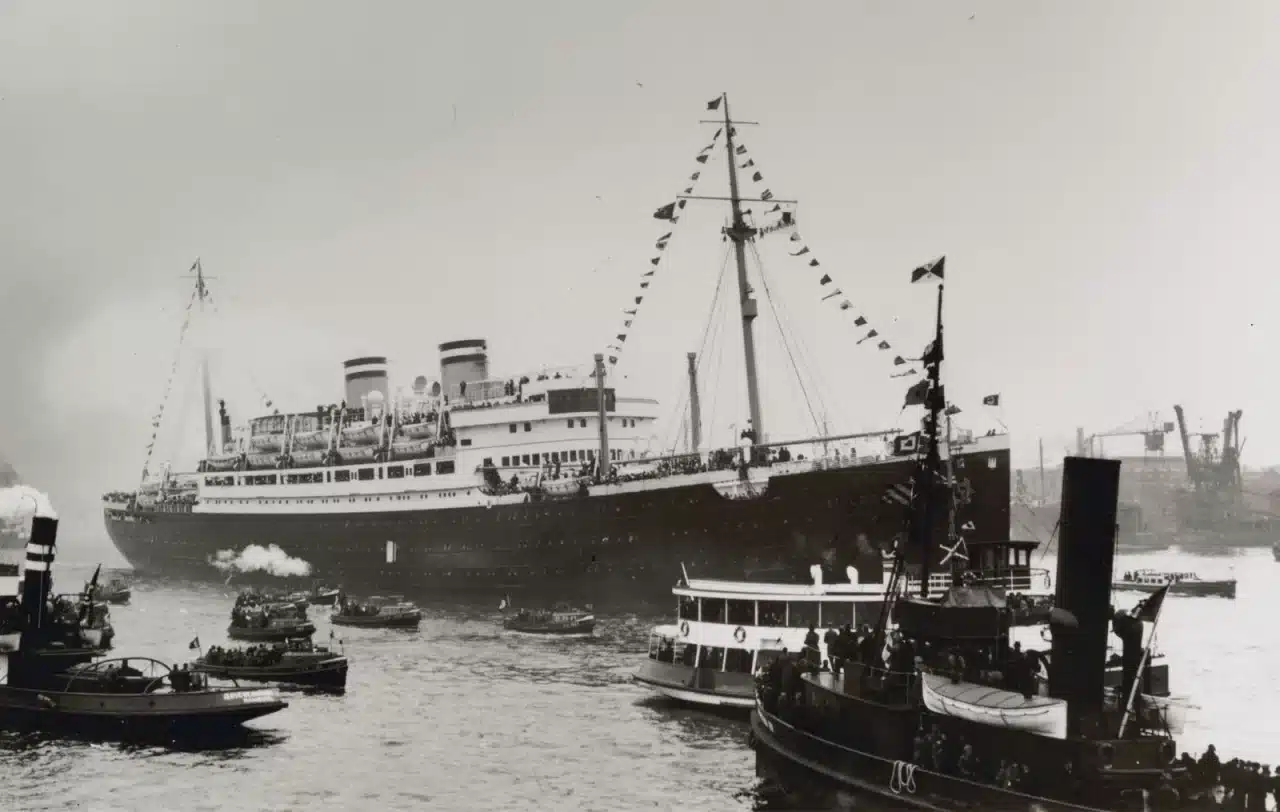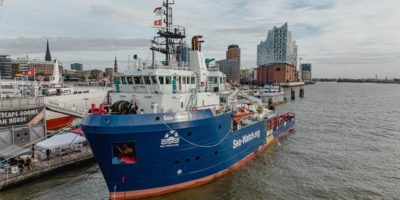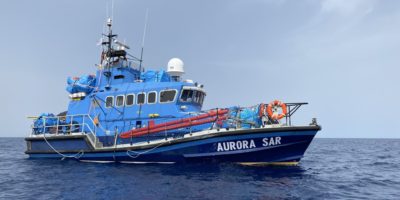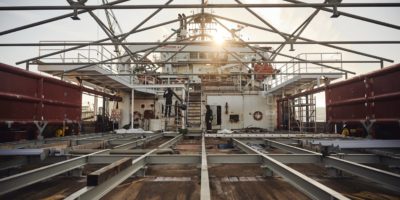With the EU and its member states competing in a race to the bottom regarding human rights, this proposal aims at setting a counterpoint, by laying out an EU led rescue programme in the central Mediterranean sea. Saving lives at sea and receiving people in a humane way is possible, also at low costs and with broad support across the population. For this to become reality however, the EU and its member states must learn from past experiences instead of buying into racist narratives and creating border spectacles by forcing people into degrading circumstances. This proposal draws lessons from the past, in order to understand why former programs have failed and how to overcome those flaws. It sheds light on the legal framework, proposing concrete mechanisms as well as laying out a cost estimate, showing that the EU can put an end to the loss of life at sea – if there is a political will.
Preliminary
In times when fundamental rights and norms are challenged, it is useful to have a look at where these principles originated. Unfortunately, in almost all cases, they come out of disasters.
Let’s remember the MS St. Louise. This ship, with almost 1000 mainly German Jews on board, left Hamburg in 1939. Most of the passengers carried valid documents for transit in Cuba and then later for entering the US. However, due to antisemitic propaganda, Cuba changed its visa policy overnight and forbade the persons from disembarking in its territory. For 11 days, the ship stayed at sea between Cuba and Florida, hoping for a solution for the refugees on board.
With the lights of Miami visible on the horizon at night, both the Cuban and the US government refused to let the ship disembark. In the meantime, the Nazi-German government ordered the ship to return and hand those who were trying to flee back over to their persecutors. When the resources on board became scarce and all attempts at negotiation had failed, the ship ran out of options. Eventually France, the Netherlands, Belgium and the UK agreed to host the passengers after disembarkation. Around 600 of those who had already been so close to safety would later end up under German occupation. Half of them did not survive the Holocaust.
The fate of the people on board the MS St Louise became symbolic of the need to protect people from malevolent states – both those who persecute them as well as those who deny them safety. In a world of nation-states which allows for constraints of the fundamental freedoms and equality of people through citizenship categorisations and restrictions upon movement, fundamental rights are indispensable for ensuring that people’s lives ultimately outweigh state interests. The rights of people to seek asylum, against being brought to unsafe places, to be rescued from distress and disembarked in places of safety, are fundamental moral principles. With the Geneva Refugee Convention, established under the immediate influence of the plight of peoples fleeing Germany, these principles were enshrined in international law. They are surely not perfect – but they must be defended, as without them, we surrender to disaster.

What is the central issue in the Mediterranean?
People fleeing persecution in countries like Libya and Tunisia have no legal pathways, forcing them to risk dangerous sea crossings. The central Mediterranean has become one of the deadliest migration routes, with ten thousands of lives lost due to a lack of coordinated rescue efforts by the EU.
Civil organizations are currently trying to fill a gap the EU is continuously opening up by calculated non-assistance. But rescue at sea is a state duty. The EU must act to end the deaths in the Mediterranean.
What is the Mare Solidale proposal?
Mare Solidale is a proposed EU-led search and rescue program designed to save lives in the Mediterranean.
It shows that the EU can decide today to implement a rescue program in accordance with human rights, rooted in lessons learned from the past operation “Mare Nostrum.” It is a question of political will.
Why is the EU criticized for its current policies?
The EU engages in deals with autocratic regimes and neglects fundamental rights, perpetuating a deadly status quo.
Current border enforcement and externalization efforts result in human rights violations and violate the principle of non-refoulement, pushing people back to unsafe places. This leads to more than 30,000 deaths, with an uncountable number of missing people.
How does the proposal affect people on the move?
The program would ensure that rescued individuals are taken to places of safety where they can apply for asylum or legal residency.
It includes a mechanism similar to the Temporary Protection Mechanism used for Ukraine, allowing people to choose their destination and facilitating arrival.
What are the financial implications?
The current border enforcement and externalization measures provided by the human rights-violating EU agency Frontex cost more than €920 million; the program’ Mare Solidale’ would cost an estimated €240 million annually.
This would be a small fraction of the EU’s budget but could significantly reduce loss of life, ensuring dignified treatment for those seeking safety.
The Status Quo in the Central Mediterranean
“the future of the two Mediterranean shores is one and the same.”
In her candidate statement in front of the European parliament in July 2024, the president of the European Commission rightly claimed that.1 However, as things are, people in Libya and Tunisia are subject to persecution, abuses, and violations of their rights, especially if they are seeking refuge. Libya has never ratified the Geneva Convention, Tunisia has no nationwide asylum system. In Libya, according to the UN Fact-Finding Mission, migrants find themselves in an “abhorrent cycle of violence”.2 In Tunisia, black people are rounded up, deported to desert regions and left there with no means of survival.3 At the same time, Tunisian nationals are experiencing increasing violations of their fundamental rights, with members of civil society being arrested, intimidated and harassed. With no legal pathways to safety, persecuted people in both countries have no other options than taking to the sea. With no comprehensive European rescue program ongoing in international waters for over 10 years, the central Mediterranean sea has turned into a mass grave. The European Union has all the tools necessary for saving lives at sea (see next paragraph). Yet a lack of political will perpetuates an unbearable situation. In the central Mediterranean sea, the year 2023 was, in total numbers, the deadliest since 2017. Since the end of the last comprehensive state-led rescue programme Mare Nostrum in October 2014, at least 20,750 people lost their lives.4 News about people dying in search of refuge reaches us on a daily basis, from all corners of Europe. The EU treats people seeking refuge as if they were criminals. Deals with autocrats, the continuous neglect of fundamental rights and an ongoing lack of accountability for violence committed by law enforcement entities are deeply troubling realities. These choices erode the values that the EU claims to uphold, and they don’t stop the loss of life at sea.
- Statement at the European Parliament Plenary by President Ursula von der Leyen, candidate for a second mandate 2024-2029 – 18 July 2024
- Report of the Independent Fact-Finding Mission on Libya – 27 March 2023
- Lighthouse Reports investigation Desert Dumps – 21 May 2024
- Missing Migrants Database, as of November 2024
Saving Lives at Sea – Lessons Learned
Nevertheless, the EU has shown that saving lives in the Mediterranean is possible. There have been various examples of this during the past years, from which we can learn.
State-led Rescue Saves Lives
The operation Mare Nostrum, according to Italian Navy data, in just 10 months from 1st January two 31st October 2014, conducted 439 SAR operations and rescued over 156,000 people in distress at sea.5 This was financed and operated by Italy, with costs of approximately 9 million Euros per month. Its contingent on an average day consisted of one amphibious vessel, two frigates, four offshore patrol vessels, six coastal patrol vessels, as well as six helicopters and three other aircraft.6 Around 700 – 1000 people were employed. Over the first months of 2014, when Mare Nostrum was operational, 17 people lost their lives while trying to cross the sea. In the same time span one year later, after Mare Nostrum was discontinued, the death toll was at least 900.7 Italy decided to terminate the operation because no other country would contribute financially or allow rescued people to be relocated.
This example shows that a rescue program is possible, with reasonable costs far below those currently spent on border enforcement. However, financial contributions from more than only coastal states are necessary, and people rescued at sea should also be able to relocate to other countries.
An Unambiguous Mandate is Imperative
In many previous cases of shipwrecks in the Mediterranean, authorities were fully aware of a distress situation, and yet no rescue was launched. One main obstacle to saving lives at sea is the fact that in many countries, the authorities tasked with rescue activities are the same as those tasked with law enforcement and border control. This leads to situations such as the current reality in Greece, in which the Hellenic coast guard are actively engaged in endangering the lives of people instead of rescuing them. The same is true for Frontex: with EUROSUR, operated by Frontex, the EU has created a vast surveillance network which could play a key role in saving lives at sea. However, with the existing double mandate of border protection as well as respect for fundamental rights, the dilemma is usually approached in favor of the former. This is especially true in areas where responsibility can be outsourced to actors who intercept people and return them to places where their lives are at risk, violating the principle of non-refoulement.
A European rescue programme therefore needs to have the sole and unambiguous mandate for saving lives at sea with full respect for international human rights law.
Search and Rescue is a Matter of Civil Protection
Examples such as Mare Nostrum show what is feasible, and they do not stand alone. In Spain, Salvamento Marítimo is a public body with the mandate to protect lives at sea. The organisation is primarily financed by the Spanish ministry of transport. This search and rescue programme is run and operated exclusively by civilians; as such, it is free and independent of all law enforcement-related tasks which would be incompatible with its mandate. With its fleet, Salvamento Marítimo conducts search and rescue operations over an area of 1,500,000 km², covering the waters of the western Mediterranean and parts of the Atlantic Ocean.
While Salvamento Marítimo is a positive example of how civil search and rescue can be state-organised, the structure has over the last years however been under considerable pressure to withdraw from its areas of operation or engage in law-enforcement activities.
Protecting lives at sea is a matter of civil protection and safety of transport, not of law-enforcement. Search and rescue tasks should therefore be located in the political fields of civil protection or transport.
The Biggest Obstacle to a Human Reception is the Principle of First Entry
What happens once people are rescued from distress? One of the main arguments for Italy to end Mare Nostrum was that no other EU member state would allow for the people rescued at sea to legally relocate in order to apply for asylum, due to the Dublin Regulation. The principle of first entry, that requires people to apply for asylum in the country where they first entered EU territory, has proved to be an incentive for violence and an obstacle to an approach of European solidarity.But also here, Europe has shown that other pathways are possible: When the war in Ukraine started, the EU activated the Temporary Protection Mechanism for the first time. This mechanism not only allows people fleeing from Ukraine to enter and transit through European countries legally, but also to freely choose the country in which they want to find refuge. It also allows for a less bureaucratic arrival, as access to housing, health, the job market and education are facilitated. The activation of this mechanism was a full success: it drastically reduced traumatic experiences and stress for those arriving as they did not have to rely on dangerous routes; it increased people’s independence and self-determination upon arrival to their host countries; it was the biggest anti-smuggling operation in modern history through the provision of legal pathways;8 moreover it tempered right-wing propaganda by not adopting a securitisation perspective on migration.
The activation of the Temporary Protection Mechanism shows that an end to the principle of first entry is a key element in organising the arrival of people to Europe in a humane and cooperative way.
Mare Solidale A Rescue Programme for the Mediterranean
Mare Solidale, a sea of solidarity. Building on the lessons learned, what could a European rescue programme look like today?
Legal Framework
The legal framework in which a European rescue programme would operate is the United Nations Convention on the Law of the Sea (UNCLOS),9 the International Convention for the Safety of Life at Sea (SOLAS)10 and the International Convention on Maritime Search and Rescue (SAR Convention).11 These conventions and their related instruments (such as the IAMSAR Manuals)12 provide for definitions of distress, conduct regarding rescue operations and the disembarkation of rescued people in places of safety. In addition, international human rights and refugee law apply to such maritime operations – in particular the European Convention on Human Rights, with the right to life,13 the prohibition of torture and inhuman or degrading treatment,14 and the prohibition of collective expulsions,15 as well as the principle of non-refoulement, as enshrined in numerous international treaties.16 In practice, this means that people must be disembarked in places where they are able to claim asylum, where their fundamental rights are secured and where they are not facing the risk of torture and inhuman or degrading treatment.Given the current situation, this does not apply to Tunisia or Libya, as in both countries, the life, rights and freedoms of people on the move are threatened. Libya and Tunisia can therefore not be regarded as places of safety.17
Implementation
As a coordinating and initiating authority, the European Commission is the best equipped institution to start such a programme.18 The respective Directorate-General for European Civil Protection and Humanitarian Aid Operations (DG ECHO) has the necessary means and responsibilities. The EU Civil Protection Mechanism already provides a good blueprint for short-term civil protection activities. This could serve as a basic framework for building up a long-term rescue programme. With the Emergency Response Coordination Centre (ECCR), there is already an institution in place to coordinate rescue capacities according to current needs. As the ECCR is financed via DG ECHO, this sends a clear message: saving lives at sea is a matter of civil protection. Using these existing mechanisms also ends the politicisation of rescue activities by right-wing forces, as governments would no longer be able to withdraw funds in their own capacity in order to appease racist national groups. It should also be clear that, as a civil protection mechanism, the EU rescue programme would not include any law enforcement mandate.
From Sea to Safety
Coordinated by the ECCR, member states of the EU send equipment and personnel from their national civil protection institutions, according to their capacities. These resources stem from non law enforcement institutions that are responsible for different forms of emergency responses, ideally also with search and rescue expertise. Within the European rescue programme, they then patrol the high seas in international waters in the area where most distress situations occur. The rescues themselves are coordinated by the respective Maritime Rescue Coordination Centres (MRCCs), who have the best overview and knowledge of the relevant regions. In areas without functioning MRCC structures or MRCC structures that have proven to violate human rights, the nearest functioning MRCC takes over the coordination. Irrespective of the coordinating actor, rescues end with the disembarkation of rescued individuals in the nearest place of safety. Under the umbrella of ECCR, a unit is created that takes over the surveillance capacities that currently lie with Frontex, in order to ensure that the existing information is used to save lives at sea. This unit could further play an important role in combining data from surveillance capacities with meteorological data and other situational data, in order to best inform MRCCs about potential distress situations. In accordance with international maritime and human rights law, all rescues end in places of safety. MRCCs and all actors involved in the rescue coordination and operation must at all times comply with fundamental rights and the legal framework outlined above. In order to disembark those rescued at sea, open First Reception Centres are set up in different coastal regions. These centres provide first medical care, the possibility to contact relatives, first orientation, and a place to rest after a dangerous journey. Building upon the positive experiences of the reception of people fleeing Ukraine, a mechanism similar to the Temporary Protection Mechanism is implemented for those who arrive via sea: the First Reception Centre issues an arrival permit, valid for three months, starting with the date of disembarkation. With these permits, those who have arrived can travel to the countries of their choice, where they have for example family ties, knowledge of the local language or job prospects. By the end of the validity period of the arrival permit, people must start their procedures for legal residence (i.e. requests for work or study permits, family reunification, asylum).
Costs
The monthly budget for Mare Nostrum was approximately 9 million Euros, or 108 million Euros per year. As Mare Nostrum however also did not have the capacities to put a complete end to the loss of life at sea, an effective EU rescue programme should possess some additional capacities. A European rescue programme with an adequate rescue capacity for reacting to the foreseeable need could be realised with a yearly budget of 240 million Euros.19 This equals 0,13% of the 2023 yearly budget of the EU,20 or 28% of the Frontex budget in 2023.21 The money currently spent on “border protection”, externalisation, prevention of secondary movement and the camp and Dublin deportation regimes exceeds this sum by far. Alone the funds promised by the European Commission to Tunisia as part of the Memorandum of Understanding, which follows the aim of border externalisation, would already allow the financing of such a search and rescue programme for almost 4 years. The proposed first arrival mechanism would release high sums of money. Financial means that are currently used to prevent people from secondary movement or to deport them back to countries of first arrival would no longer be needed. With people choosing their place of settlement according to their needs, abilities and family ties, state costs for reception and integration would sink drastically. Through earlier medical treatment and less traumatic migration routes, costs for the health system would also decline. In addition, people would more easily integrate into the labour market and pay taxes in their host countries.
-
- United Nations Convention on the Law of the Sea
- International Convention for the Safety of Life at Sea
- International Convention on Maritime Search and Rescue
- IAMSAR Manuals
- European Convention on Human Rights, Art. 3
- European Convention on Human Rights, Art. 4 of Protocol No. 4
- Namely the 1951 Geneva Convention Relating to the Status of Refugees, Art. 33, the UN Convention Against Torture Art. 3, and the International Covenant on Civil and Political Rights Art. 7.
- Joint Statement: Tunisia Is Not A Place Of Safety For People Rescued At Sea, 04 October 2024
- While the European Commission often claims not to have a mandate over search and rescue initiatives, it has in the past been very active in initiatives that ultimately aim at stemming search and rescue efforts. In this proposal, it would only act as coordinating and initiating institution, which is definitely in line with it’s mandate.
- Taking into account an inflation rate of approximately 25%, a program with the same capacities as Mare Nostrum would cost around 135 million €/ year today. In order to effectively end the loss of life at sea, additional capacities summing up to 100 million € would be needed.
- EU Budget 2023
- Frontex Budget 2023
Conclusion
This proposal is not necessarily meant as a blueprint, but as a stimulation to start a conversation about the politically enacted paralysis around search and rescue and ways to overcome it. The aim is to show that the European Commission can decide today to end the dying at sea and coordinate the implementation of a rescue programme in accordance with human rights. This is not a question of mandate, ressources or mechanisms, but purely of political will.
An EU rescue programme would cost the EU and its member states much less money than the current status quo of border enforcement and externalisation deals with autocrats. The human costs, both in terms of lives saved and quality of life, for those arriving as well as for people living in Europe, are impossible to put into numbers.
The following organizations have lent their voices in support of the Mare Solidale proposal, advocating for a humane and effective EU-led rescue programme in the Mediterranean.
- Coalition for the El HIblu 3
- Kopin (Koperazzjoni Internazzjonali – Malta)
- RAAH! Reality about Humanity
- MAEC – Mediterranean Aid Education Center
- Mediterranea Saving Humans
- Mission Lifeline
- MV Louise Michel
- r42 – Sail and Rescue
- r42 – Sail and Rescue
- SAR Malta Network
- Sea-Eye
- Sea-Punks
- SOS Humanity
- TAMA
- United 4 Rescue
- Watch the Med Alarm Phone




